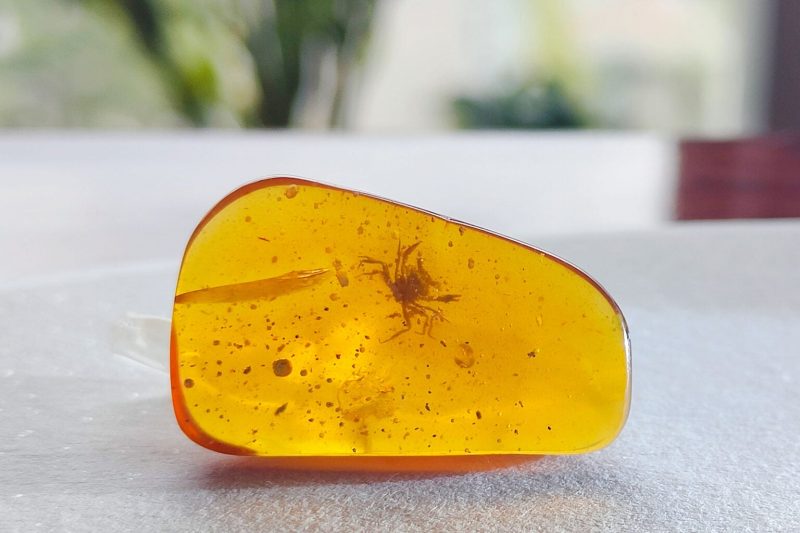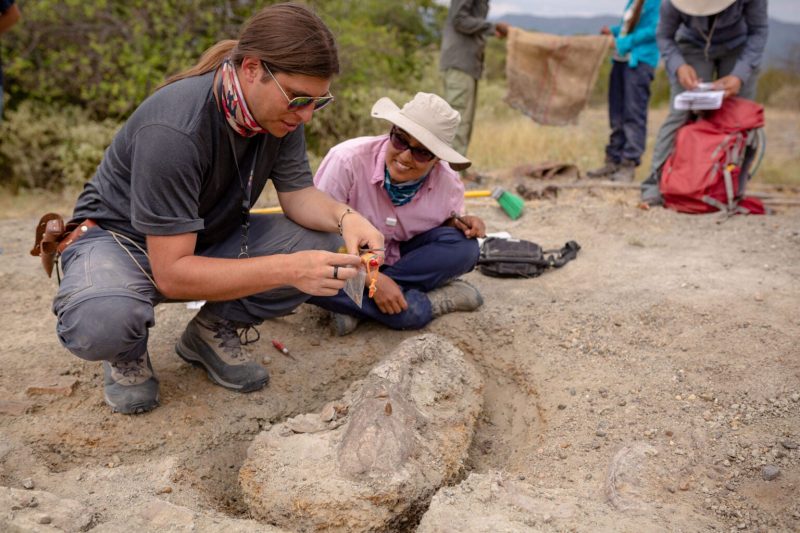
A superlative 100-million-year-old crab
An international team of scientists said October 22, 2021 that they’ve discovered a 100-million-year-old crab preserved in amber. The curious little crab is no bigger than a pencil eraser. It’s the most complete fossilized crab ever discovered, the first crab ever found in amber from the dinosaur era and the oldest modern-looking crab ever found. It’s also the oldest evidence of incursions onto land by “true crabs.” Crustaceans are largely aquatic animals. And scientists wonder how this little crab got into the amber. Lead author Javier Luque of Harvard University said:
In a way, it’s like finding a fish in amber. Talk about wrong place, wrong time.
The peer-reviewed journal Science Advances published these scientists’ study on October 20.
The 2022 lunar calendars are here. Order yours before they’re gone!
True crabs, and the fossil record
True crabs (Brachyurans) have a thick exoskeleton and pincers. False crabs (Anomurans) aren’t technically crabs but evolved to resemble them, such as hermit crabs and king crabs.
Previously, the oldest crab fossils that showed crabs coming from the sea onto land and freshwater were 50 to 75 million years ago. The new finding pushes back this date substantially. Luque said:
If we were to reconstruct the crab tree of life — putting together a genealogical family tree — and do some molecular DNA analysis, the prediction is that nonmarine crabs split from their marine ancestors more than 125 million years ago. But there’s a problem because the actual fossil record — the one that we can touch — is way young at 75 to 50 million years old…. So this new fossil and its mid-Cretaceous age allows us to bridge the gap between the predicted molecular divergence and the actual fossil record of crabs.
Scientists once thought there was a Cretaceous Crab Revolution, when crabs worldwide diversified and started leaving their marine habitats. But fossil evidence eventually showed that different crab species evolved independently as they journeyed outside their marine worlds. This new find brings the total evidence for independent evolution to 12.
The immortal Cretaceous spirit
Scientists named the new fossil Cretapsara athanata, which means “the immortal Cretaceous spirit of the clouds and waters.” Immortal seems like an appropriate name, even though the creature was probably a baby when it died more than 100 million years ago, because its preservation over that time period is exquisite. Using micro-CT scans, the scientists could see the crab’s antennae, legs, and mouthparts lined with fine hairs, its large compound eyes, and even its gills. Not a single hair was missing.

The Longyin Amber Museum in China purchased the fossilized crab in amber from miners in Myanmar in 2015, which predates the sociopolitical conflict of the region. The researchers have limited their studies to materials that predate the 2017 onset of hostilities there. As the press release said:
They hope acknowledging the situation in the Kachin State will serve to raise awareness of the current conflict in Myanmar and the human cost behind it.
For the love of crabs
Luque has studied crab evolution for more than a decade and is excited to turn the world’s attention to them. As he said about crabs:
They are all over the world, they make good aquarium pets, they’re delicious for those of us who eat them, and they’re celebrated in parades and festivals, and they even have their own constellation. Crabs in general are fascinating, and some are so bizarre-looking — from tiny little pea-shaped crabs to humongous coconut crabs. The diversity of form among crabs is captivating the imagination of the scientific and nonscientific public alike, and right now people are excited to learn more about such a fascinating group that are not dinosaurs. This is a big moment for crabs.

Bottom line: A 100-million-year-old crab is the first crab ever found in amber from the dinosaur era.
Source: Crab in amber reveals an early colonization of nonmarine environments during the Cretaceous











